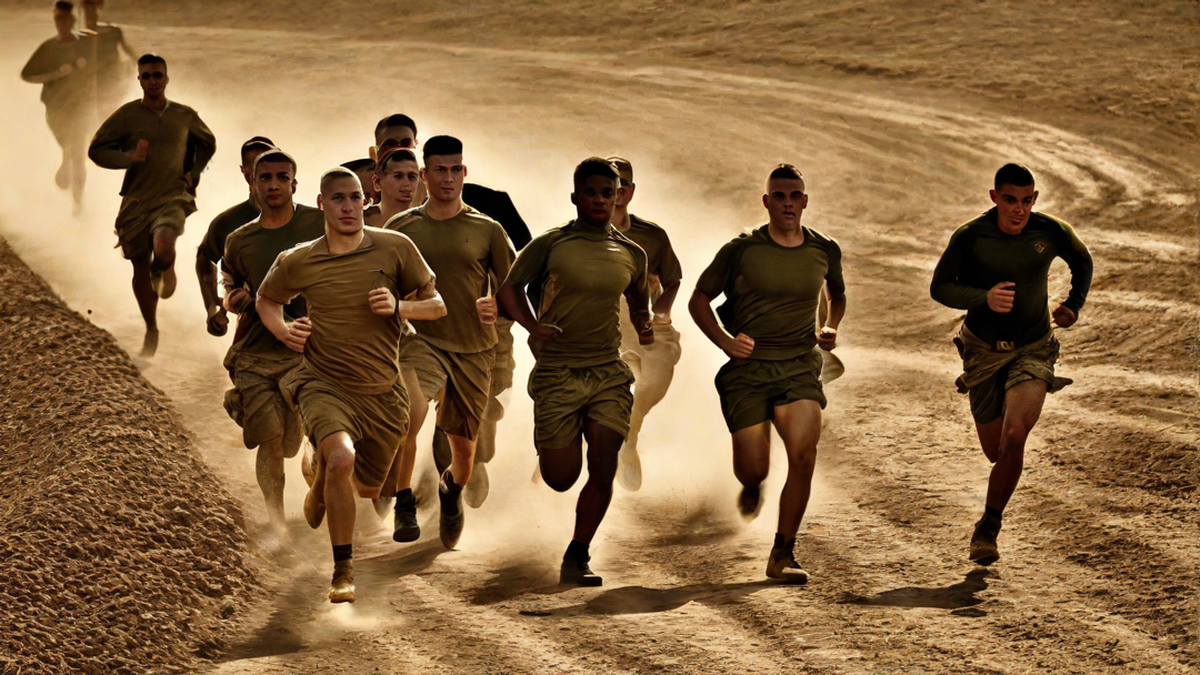Army basic training is known for its rigorous physical demands, and one aspect that stands out is the amount of running involved. As someone who has experienced it firsthand, I can attest to the fact that running plays a central role in shaping recruits into strong and resilient soldiers.
Running: The Foundation of Physical Fitness
From the moment you step foot in basic training, running becomes a daily activity. It serves as the foundation for developing physical fitness, endurance, and mental toughness. The training schedule typically includes early morning runs, timed distance runs, interval training, and even longer endurance runs.
Running is not just a form of exercise in basic training; it is a way of life. It teaches recruits the importance of pushing past their limits, building discipline, and working as a team. The physical demands of running also help to improve cardiovascular health, increase stamina, and build lower body strength.
The Initial Challenges
For many recruits, the initial weeks of running in basic training can be incredibly challenging. Tackling long distances or maintaining a fast pace may seem overwhelming at first. However, the training instructors are well-prepared to guide and motivate recruits, pushing them to reach their full potential. Gradually, recruits begin to build their endurance and find themselves surpassing their own expectations.
One of the greatest lessons I learned during my time in basic training was the importance of mental toughness. Running taught me to push through the physical discomfort and keep going, no matter how tired or achy my body felt. It taught me to embrace the discomfort and use it as fuel to keep moving forward.
Gradual Progression
As weeks go by, the running distances and intensities increase. Recruits may start with shorter runs and progress to longer distances, such as completing a 5k or even a 10k. These milestone achievements not only boost confidence but also reinforce the idea that with perseverance and dedication, anything is possible.
Furthermore, running in a group setting fosters camaraderie and teamwork. We learn to support and encourage each other. Running alongside fellow recruits creates a sense of unity and helps build strong bonds that will last throughout the entirety of training and beyond.
The Benefits Beyond Basic Training
The physical and mental benefits of the extensive running in basic training extend far beyond those few months of rigorous training. Graduates of basic training are equipped with a strong foundation in physical fitness, discipline, and resilience. They carry these skills forward into their military careers and beyond.
Running in basic training not only prepares recruits for the physical demands of military life, but it also instills a mindset of determination and perseverance. The mental fortitude developed through running translates into the ability to overcome challenges in all areas of life. It becomes a lifelong tool that helps soldiers to excel in their military careers and face any obstacles that may come their way.
Conclusion
Running in army basic training is not just about physical fitness; it is a transformative experience that molds individuals into resilient soldiers. Through the challenges, sweat, and determination, recruits gain strength, endurance, and mental toughness that will serve them well throughout their military careers and beyond.

